|
|
||||||||||
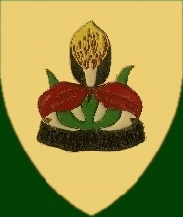
Military Academy - Militere Akademie
Inleiding - Introduction
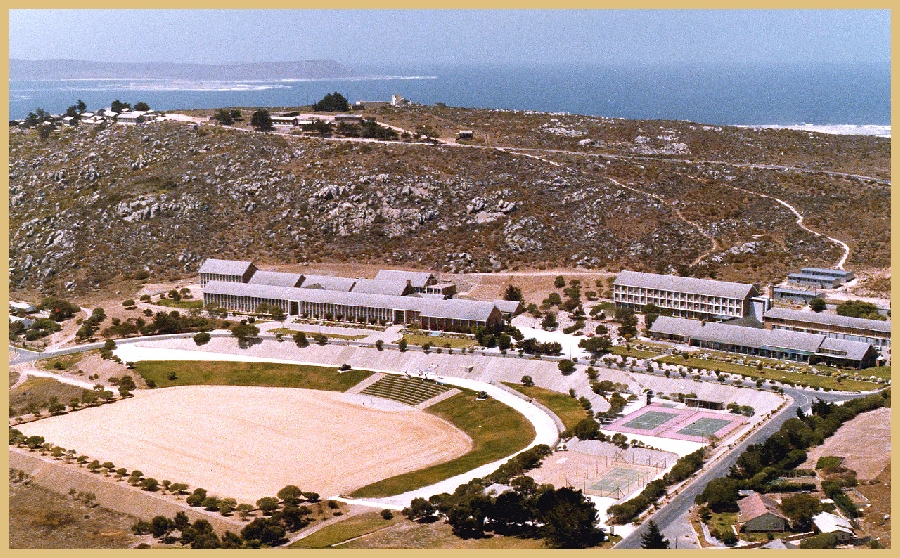
Aerial view of the Miltary Academy in Saldhana Bay
A brief history of the South African Military Academy, 1950-1999
by Lt Col Deon Visser
Photographer: D R Strachan - Military Academy, 1978 - 1979
|
When the National Party came to power in 1948, the new Minister of Defence, F.C. Erasmus, wanted put to officer education in South Africa on the same level as in Europe and the United States of America. It was therefore decided to establish a military academy at Voortrekkerhoogte (currently Thaba Tshwane) more or less along the lines of Sandhurst and WestPoint. The idea was to appoint civilian academics as officers in the Union Defence Force, who would then present a four-year degree course at the Academy. A lack of financial resources, however, prevented this. When the Military Academy eventually came into being on 1 April 1950, it was not an independent branch of the SA Military College (currently the SA Army College) as was intended. It initially formed part of the General Branch of the College, but later came under the control of the Physical Training Branch of that institution. Academically it functioned under the auspices of the University of Pretoria, who presented the bulk of the three-year BA(Mil) and BSc(Mil) degree courses that were instituted. The few military lecturers for whose appointment approval could be obtained, were restricted to the teaching of a few first-year subjects only. It was initially hoped that the Academy could produce officers for all three arms of the service. The inland location of the Academy, however, made the training of naval cadets unpractical, so the Academy trained officers for the Army and the Air Force only. (For some reason the Navy seems to have regarded the mighty Apies River to be a poor substitute for the high seas!) This first cadet course proved to be a total disaster. Only seven of the 30 cadets that were admitted, passed their first-year, while two more obtained enough credits to continue with their second-year. There were thus only nine second-years in 1951. Only six of them graduated at the end of their three-year training program. There were several reasons for this. Firstly, slavishly following the West Point curriculum, undue emphasis was placed on the Natural Sciences, to the extent that Mathematics, Physics, Chemistry and Applied Mathematics were compulsory subjects for both the BA(Mil) and BSc(Mil) degrees. Secondly, the limited number of applications for the Academy forced the military authorities to select candidates that did not have the necessary school subjects to provide the background for the studying of those subjects at university level. Thirdly, the students found it impossible to cope with both military training and academic studies at the same time. |
|
The Main Building... |
|
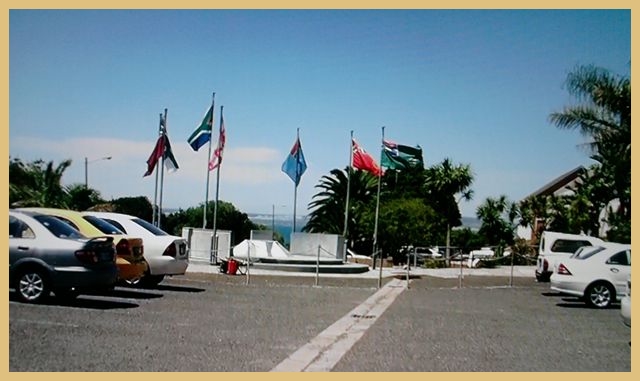 |
Die motor parkeerplek voor die hoofgeboue met al die verskillende vlae van die destydse weermag... |
|
In order to rescue the situation, the degree course was extended to four years, while subjects like Mathematics, were eventually dropped from the BA(Mil) curriculum. The cadets now completed their first-year subjects over a two-year period at the military gymnasiums, the various military colleges and the Military Academy. Thereafter, they enrolled for two years full-time study at the University of Pretoria, without the burden of undergoing military training at the same time. These changes, however, did not produce significantly better results than the previous scheme. The Union Defence Force high command soon realised that the Academy was not producing anything like the West Point/Sandhurst-type officer that they had wished for. The Permanent Force cadets were obtaining almost purely civilian degrees, while their two years full-time study at the University of Pretoria made proper military training impossible. The scattering of the cadet training at several institutions, together with the Academy’s subservience to the Military College, also made it impossible to create the kind of atmosphere and cultivate the culture and esprit de corps that is associated with institutions like West Point and Sandhurst. It was consequently decided to establish the Academy as an independent, combined institution on the lines of the Indian National Defence Academy, training officers for all three arms of the service. Saldanha was chosen as new location for the Academy, since it already housed the Naval Gymnasium to facilitate the training of naval students, while the close proximity of Langebaan Road presented excellent training facilities for Air Force students. Adequate space was also available to create training facilities for Army students. At its new location, the Academy functioned under the trusteeship of the University of Stellenbosch, from whom successful candidates received a B Mil degree in the Natural or Human Sciences. On 1 February 1956, the Military Academy was organisationally divorced from the SA Army College, whereupon its headquarters were temporarily shifted to Stellenbosch, awaiting the erection of suitable accommodation at Saldanha. The offices of Officer Commanding and Dean of the Military Academy were combined in a single post. The first 31 military first-year students had, in the meantime, already begun attending classes at Stellenbosch at the beginning of 1955. |
| View of "The Combined Club" up the embankment... | 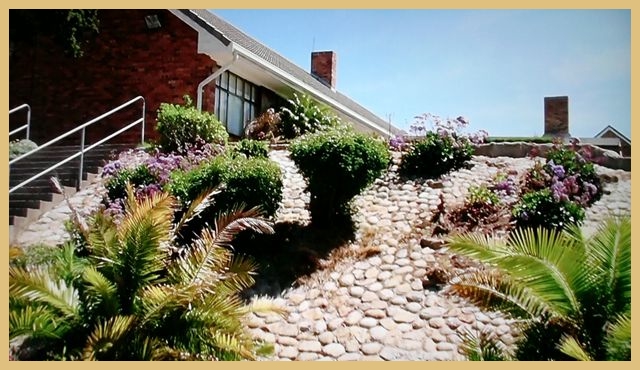 |
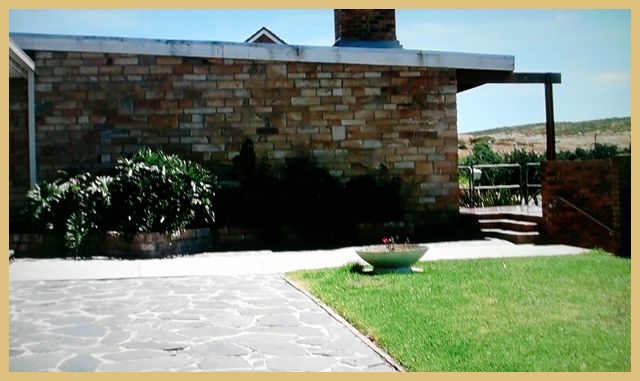 |
The front porch area of the Combined Club where Officers and personnel teas were and are still taken... |
|
The first year of the degree course had to be completed in Stellenbosch to comply with the regulations of the University of Stellenbosch. The construction of the building complex at Saldanha started early in 1956 and in December 1957, the headquarters of the Military Academy moved to Saldanha. The first (second- and third-year) students reported at Saldanha in February 1958. Since the new building complex was still under construction, the wooden huts on Malgaskop, dating from the Second World War, were utilised as offices, lecture-rooms, mess and sleeping-quarters. The new complex was occupied in the course of 1958 and the beginning of 1959. An important milestone was achieved in January 1961, when the Academy became a faculty in its own right - the Faculty of Military Science of the University of Stellenbosch. A third study direction, Commercial Sciences (currently Management Sciences), was introduced at the Academy at the same time. The first-years were henceforth also accommodated at Saldanha. The Academy then entered a significant growth phase, during which the number of students rose from 34 in 1960 to 145 in 1964. In 1967 it was decided that the Academy would in future have to become involved to a greater extent also in the military training of candidate officers. This led to the separation of the office of Dean and Officer Commanding in December 1967, to facilitate the appointment of a career officer as Officer Commanding, in order to do justice to the military component of the training mission. The formative training of young officers, which encompassed a period of six months, was consequently presented at the Military Academy from 1970, whilst the degree course for Academy students was reduced from three to two years. Since the combined formative training did not satisfy all the needs of the different arms of the service, the responsibility for formative training was, however, once again transferred to the arms of service in 1976. The degree course was at the same time extended to the normal three-year period. |
| Front entrance to "The Combined Club"... |
|
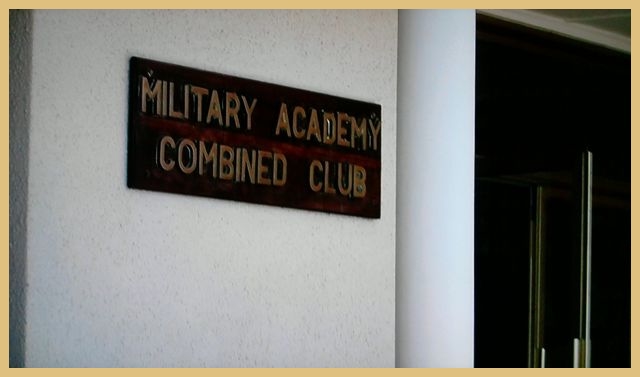 |
Many ceremonial functions have been held here over the years... |
|
After almost three decades as an exclusively white, male institution as far as the student body was concerned, a turning point was reached in 1978 and 1979, when female students (three) and a so-called “coloured” student were respectively admitted to the Military Academy for the first time. The admittance of female students was, however, suspended the very next year due to lack of suitable accommodation. Students from other population groups were never forthcoming in significant numbers. It was only in 1990/1, in anticipation of the coming of the “New” South Africa, that a concerted effort was made to make the student body more representative of the South Africa population. Female students were consequently in 1991 readmitted to the Academy, whilst every effort was made to recruit more students from the Indian, black and so-called “coloured” community; 1991 indeed saw the first ever black students being admitted to the Academy. With the exception of the first half of the 1970’s, when the formative training of officers was undertaken at the Academy, the Military Academy had since its establishment at Saldanha moved away from being a traditional military academy into the direction of a military university; instead of training cadets and thus producing officers, it was offering university education to (often married) commissioned officers, some already holding the rank of major. From 1990, however, steps were taken for the recruitment of younger candidates and from 1996 the Academy was to be gradually transformed into a traditional military academy once again, training and educating cadets (candidate officers/midshipmen) only. At the same time it was decided to gradually increase the number of students from approximately 200 to 450 by 1999. To accommodate the enlarged student body, the facilities at the Academy were upgraded, with, inter alia, four new accommodation blocks, a new library, some new lecture rooms, several new offices and additional messing facilities being added to the existing building complex. However, current indications seem to point that the Academy will rather develop as a military university. |
|
An old ceremonial gun flanks the Parade Ground showing the old, weathered Podium... |
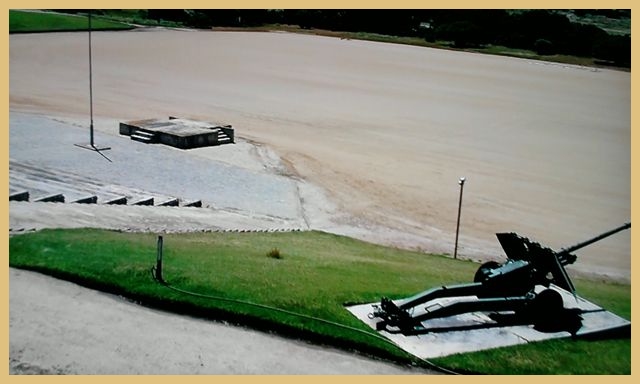 |
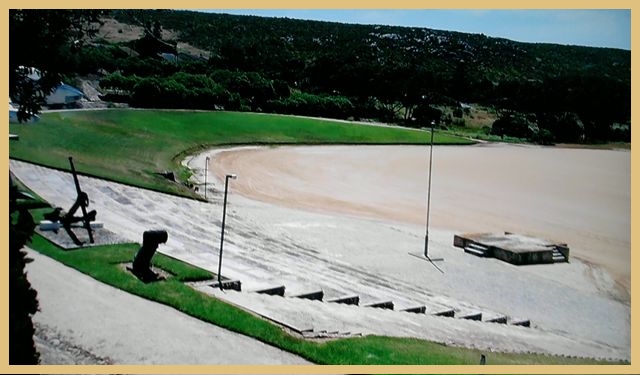 |
Die Parade Grond, waar Militere Seremonies oor die jare plaasgevind het... |
|
Die drie wapens wat op die kant van die Parade Grond is, die Impala van die Lugmag, die Kanon van die Leer, en die torpedo van die Vloot, simboliseer die drie arms van die Weermag... |
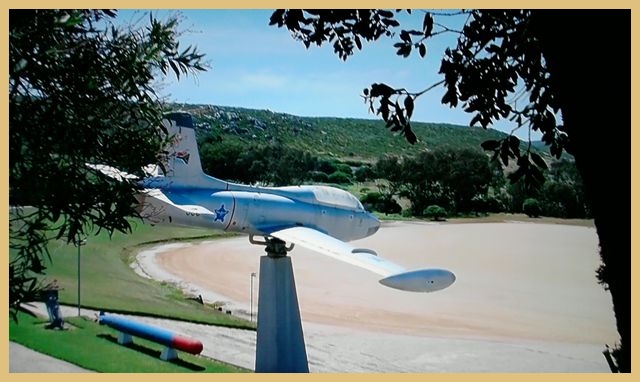 |
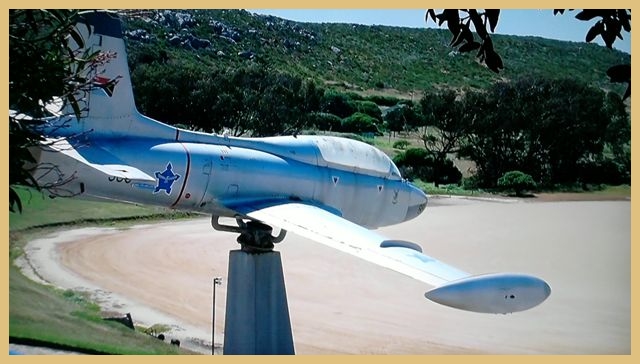 |
The Impala jet reflecting the new South African Flag on its tail... |
|
|
||||||||||